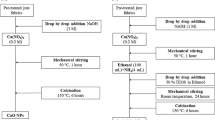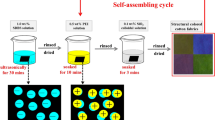Abstract
The adsorption behavior of Reactive Orange 5 and Reactive Red 2 on ramie fabric is studied, and their structures are investigated by using density function theory (DFT) and time-dependent DFT (TD-DFT) calculations. The results indicate that Reactive Red 2 reaches a saturation adsorption state more quickly than Reactive Orange 5. With the increase of temperature from 30 to 50 °C, the equilibrium adsorption amount of Reactive Red 2 and Reactive Orange 5 increases correspondingly, and at the same temperature the former presents a larger adsorption amount than the latter. In addition, the chlorine atom and the conjoint carbon atom of Reactive Red 2 produces a weaker binding force than those of Reactive Orange 5, which implies the nucleophilic attack of hydroxyl groups of ramie fabric to the corresponding carbon atoms occurs more easily in Reactive Red 2 than in Reactive Orange 5. The energy band gap (translation from HOMO to LUMO) of Reactive Red 2 is lower than that of Reactive Orange 5, and this indicates Reactive Red 2 has a higher chemical activity. The LUMO of Reactive Red 2 (−3.05 eV) is lower than that of Reactive Orange 5 (−2.93 eV), which indicates that Reactive Red 2 presents a stronger ability to accept electrons than Reactive Orange 5. The conclusion that Reactive Red 2 has stronger adsorption activity than Reactive Orange 5 is supported and explained by the results of these quantum chemical calculations.
Similar content being viewed by others
References
S. Fujioka and S. Abeta, Dyes Pigm., 3, 281 (1982).
J. R. Aspland, Text. Chem. Color., 24, 18 (1992).
D. M. Lewis, Text. Chem. Color., 30, 31 (1998).
Y. Cai, M. T. Pailthorpe, and S. K. David, Text. Res. J., 69, 440 (1999).
Z. W. Wu, Rev. Prog. Color. Relat. Top., 28, 32 (1998).
G. Nalankilli and S. Padampat, Am. Dyest. Rep., 83, 28 (1994).
V. N. Nemykin, J. G. Olsen, E. Perera, and P. Basu, Inorg. Chem., 45, 3557 (2006).
G. Menconi and N. Kaltsoyannis, Chem. Phys. Lett., 415, 64 (2005).
Z. Al-qodah, Water Res., 34, 4295 (2000).
L. Donnaperna, L. Duclaux, R. Gadiou, M. P. Hirn, C. Merli, and L. Pietrelli, J. Colloid Interf. Sci., 339, 277 (2009).
H. Freundlich, Z. Phys. Chem., 57, 385 (1907).
S. Fliszar, “Charge Distributions and Chemical Effects”, Springer, New York, 1983.
P. E. Smith, J. Am. Chem. Soc., 113, 6029 (1991).
J. Gao, J. Chem. Phys., 98, 1975 (1993).
P. Cieplak, J. Comp. Chem., 12, 1232 (1991).
R. H. Holm and F. A. Cotton, J. Am. Chem. Soc., 80, 5658 (1958).
F. A. Cotton and C. W. Wilkinson, “Advanced Inorganic Chemistry”, 3rd ed., InterScience Publisher, New York, 1972.
K. Fukui, Science, 218, 747 (1982).
M. Karabacak, M. Cinar, and M. Kurt, Spectrochim. Acta A., 74, 1197 (2009).
D. F. V. Lewis, C. Loannides, and D. V. Parke, Xenobiotica, 24, 401 (1994).
Z. Zhou and R. G. Parr, J. Am. Chem. Soc., 112, 5720 (1990).
A. E. Reed and F. Weinhold, J. Chem. Phys., 83, 1736 (1985).
A. E. Reed, R. B. Weinstock, and F. Weinhold, J. Chem. Phys., 83, 735 (1985).
Author information
Authors and Affiliations
Corresponding author
Rights and permissions
About this article
Cite this article
Peng, X., Cai, Y., Zeng, Q. et al. Adsorption behavior of reactive orange 5 and reactive red 2 on ramie fabric and their quantum chemical calculations. Fibers Polym 15, 2146–2153 (2014). https://doi.org/10.1007/s12221-014-2146-z
Received:
Revised:
Accepted:
Published:
Issue Date:
DOI: https://doi.org/10.1007/s12221-014-2146-z




